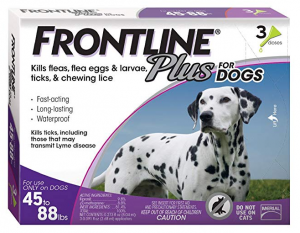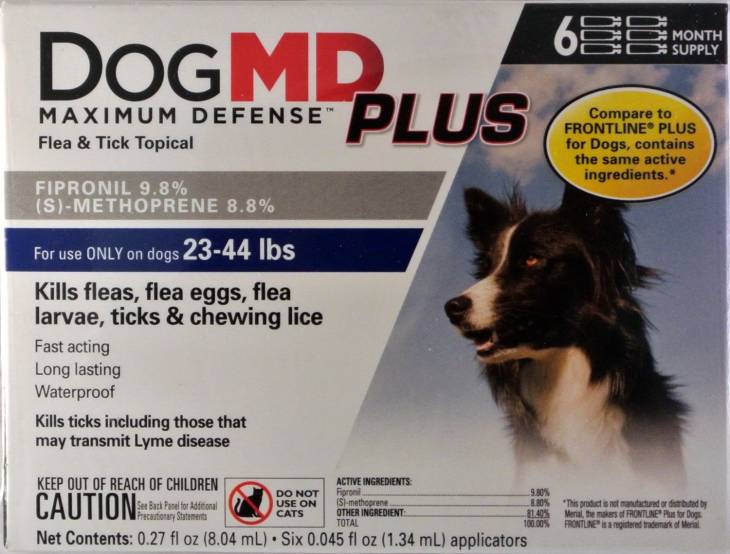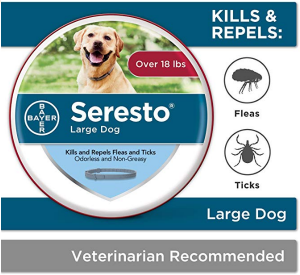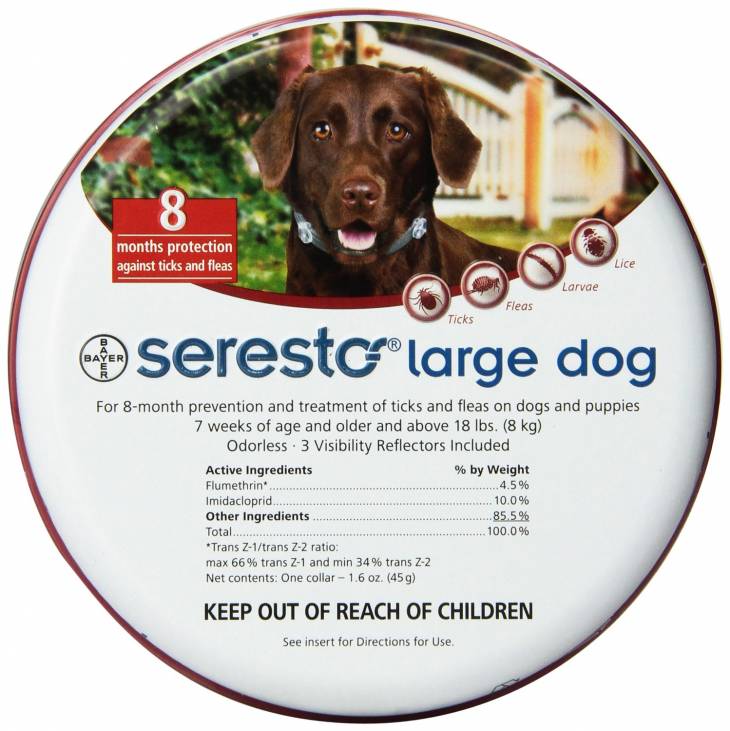Scratching that Itch: What’s the Best Flea Treatment for Dogs?
Fleas are a common problem for dogs, and dealing them is a necessary evil the moment your four-legged friend starts scratching excessively. One of the best ways to do so is to provide your pooch a treatment that will keep the critters at bay. Which one will be most effective?
OUR PICKS FOR THE BEST FLEA TREATMENT FOR DOGS
**Clicking the links above will take you to Amazon, where you can see prices, customer reviews, product specs, etc.
The Treatment Before the Treatment
It can be easy to give fleas the “out of sight, out of mind” treatment for your dog. However, there are a few proactive tricks that you can deploy to lessen the instance of fleas before they develop into a nasty infestation. These preventions usually involve over-the-counter options like shampoos or topical creams.
What to Look for in a Flea Treatment
Obviously, if your dog manages to unwittingly become a magnet for fleas, a flea treatment can be an essential part of getting things back to normal. Even though each treatment on the market promises to jettison fleas from your pooch’s life, there should be a few things that you should be on the lookout for when it comes time to buy a product.
The most important thing to seek out in this situation is a flea treatment that will wipe out the flea issue in totality. This means a product that will kill adult fleas and stop the development of eggs and larvae. Specifically, you’ll want to look for a product that lists a larvae-killing chemical like pyriproxyfen or methoprene.
You may also want to consider picking up a flea treatment that is known for wiping out various worms. This could be especially important if you have a dog that’s had a history of worm issues. Also, keep in mind that some dogs are known to develop a taste for fleas – something that could cause tapeworms to manifest.
Types of Flea Treatments on the Market


There are a wide range of flea treatments on the market, to the point where it can be quite overwhelming if you’re seeking a treatment for the first time. If you find it to be a bit much, you may want to set up an appointment with your veterinarian to determine what treatment may work best for your dog.
Arguably, the most famous flea treatment on the market is the flea and tick collar. While it looks easy enough to apply, you need to be mindful of a few things when you slip it on, such as collar snugness or long-term irritation. Some collars will also lose their effectiveness when wet, so this may not be the best option if your dog likes the water.
Monthly topical insecticides are also a popular option because they are easy to use and have a tendency to last the longest. All you need to do is rub it onto your dog’s effective area, and remember to do so on a monthly basis. The main issue with this treatment is if you own a cat, as your feline could get quite sick if he comes in contact with the stuff.
There are also spray solutions on the market, and they typically will come in either pump bottles or aerosols. These sprays will come in both short-term and long-term formulas, so you may want to consider the latter if you feel flea infestations will be a problem. If you do use a spray, be sure to use in a well-ventilated area.
Flea and tick shampoos can be an effective treatment when your pooch is riddled with adult fleas in the fur. They’re primarily thought of as more of a short-term solution, as they’re primarily designed to wipe out current critters and not really built for future generations. Shampoos need to settle on the dog for a few minutes in order to work.
It may be easy to confuse a flea dip with a flea shampoo, but it’s actually a concentrated chemical that needs to be diluted in water and then carefully applied to your dog’s fur. A flea dip will also not be rinsed off of your dog after application. Because flea dips can lead to toxic reactions, it’s only recommended for extreme infestations.
If you want a more hands-on approach, you can always look into buying a flea comb. This may be something your pooch appreciates because you’ll be giving him up-close attention during the process, which he could interpret as a bonding moment. If you use this method, you can kill the adult fleas by placing them in detergent water.
There are also oral products like tablets that can knock out fleas fast. However, this particular treatment is usually looked upon as a short-term solution that should be used along with a longer-lasting treatment. That said, this could be a good option if you occasionally bring your dog to potentially infested areas like a dog park.
What About Home Flea Treatment Remedies?
Some pet owners may be reluctant to use over the counter or prescription flea treatments because they are worried about the chemicals involved in the process. These owners typically turn to one of several home treatments that serve to combat the issue. These DIY remedies involve everything from citrus juice to a good old-fashioned bath.
While this is a viable alternative, it is not without its drawbacks. For instance, home remedies aren’t designed to break the flea’s life cycle, which means that addressing the flea issue will be a perpetual process. This could also translate to your dog having fits of misery as the cycle of flea season manifests.
Home remedies may not be the optimal solution if you’re worried about your dog having secondary issues, such as worms. As such, if you insist on using a home remedy rather than an OTC or a prescription treatment, you should bring your pooch to the vet to get him checked for other issues like worms first. Better to be safe than sorry.
OUR FINAL RECOMMENDATIONS
Frontline Plus for Dogs Large Dog
As long as you’re diligent with keeping an application schedule, using a topical cream or ointment can be a very effective flea treatment. Ideally, it can also be a great weapon in the fight against future generations of fleas, not to mention other critters. The latter part is why Frontline Plus for Dogs Large Dog is so effective.
Its ability to eradicate other pests like ticks and chewing lice can be a huge benefit if you have a pooch that loves to frolic outdoors. Ticks, in particular, love the hang out on grass, and an active outdoor dog could easily become a tick magnet. A few of these nasty bugs on your pooch could potentially lead to bad things like lyme disease.
The one thing you’ll need to make sure when you get this product – or any flea treatment in general – is to make sure you buy the product formulated to match your dog’s size. Applying the wrong cream to a large sized dog could render the product ineffective. Applying it to a small sized dog could cause illness.
Sometimes the best solution is the simplest solution. That’s why the Bayer Seresto Flea and Tick collar makes for a good option. It may not be as fancy as a topical cream or a dip, but that doesn’t mean it’s less effective.
In fact, a quality flea collar like this one could be the optimal choice for you if you live a busy, active lifestyle. Some of the treatments may take a bit of time to properly apply, whereas a flea collar is something that a pooch can simply wear for an extended period of time.
This may be a good option if you have a breed that is stubborn or low-maintenance dogs that aren’t used to having a lot of hands-on grooming attention. While there may be a few things you’ll have to do to the collar so that it fits properly, your dog may find it easier to deal with then, say, a full-blown shampoo session.
One word of caution if you use a collar. Just because you slap one around your dog’s neck doesn’t mean your job is done. Be sure to periodically check your pooch’s neck to make sure the fit isn’t causing any irritation or if it’s still fitting properly snug.
No matter how you approach treating your dog’s flea issue, the fact that you’re handling the issue in of the utmost of importance. Ultimately, your goal should be to minimize the instances of your dog suffering from long bouts of scratching at his skin.
When you succeed, your dog will appreciate it more than you can possibly realize. Sure, he may not like the treatment in the short-term, but there’s no doubt he’ll be happy with the long-term results.





